Benjamin Gedan is deputy director of the Latin American Program at the Woodrow Wilson International Center for Scholars and an adjunct professor at Johns Hopkins University. He is a former South America director on the National Security Council and also served at the State Department and the Treasury Department.
Why have Iran and Venezuela, two countries that are 7,600 miles apart, become allies? What specific ways do they cooperate?
Iran and Venezuela have a long history of cooperation. It began with their roles as founding members of OPEC in 1960. The relationship intensified after Hugo Chávez became president of Venezuela in the late 1990s, and the relationship began to diversify. Chávez visited Tehran in 2001, and senior Iranian officials began traveling to Venezuela as well. A range of economic agreements was signed to mark each of these high-profile trips.
During the presidency of Mahmoud Ahmadinejad, both countries worked together even more intensely because he was seen as an ideological fellow traveler. Chávez visited Tehran again in 2006 and 2007. Each time, he would negotiate new agreements, often creating commercial opportunities for Iran. One deal of note was the building of Iranian tractor and car manufacturing facilities in Venezuela. Another was a plan for a petrochemical plant that would be jointly built and operated in Iran. Ahmadinejad also visited Venezuela during this period as a symbolic gesture to show that there was meat on the bones of this new relationship.
In actuality, most of these agreements produced very little commercial activity. And, although trade did increase over time, it never matched the excitement of any of these bilateral meetings at high levels. There was a time when Venezuela, flush with oil revenues, was able to start importing Iranian vehicles, machinery and industrial parts. The height of their relationship was in 2008. But high oil prices until 2014 gave Venezuela the wherewithal to be a meaningful trading partner to Iran.
Is it correct to say that Chávez was the one who initiated the relationship?
Absolutely. There were strategic and ideological interests for Iran. But it was mostly driven by Chávez, whose political ideology was pushing him to find non-traditional partners and trying to shift the balance of power in the Western Hemisphere away from a U.S.-dominated model.
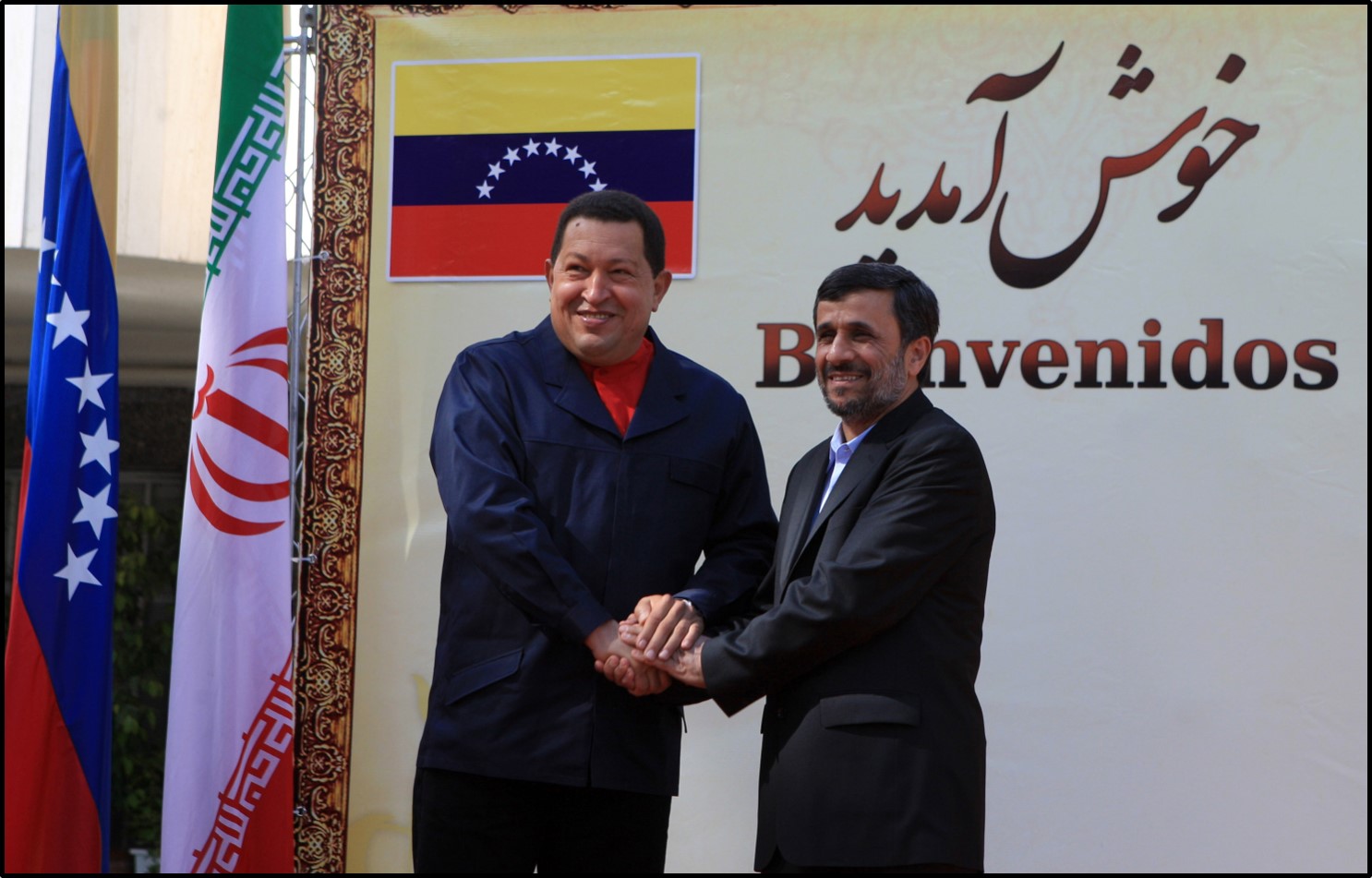
In the early period, there was very little hesitation on either side, in particular with Ahmadinejad and Chávez. They were countries that ideologically shared an antipathy toward the United States and had a history of cooperation on energy in OPEC. For the Iranians, particularly under Ahmadinejad, there was little downside in forming a diplomatic relationship with Venezuela. It was different under subsequent Iranian governments when Venezuela was increasingly seen as a rogue state, particularly when Iran was negotiating a nuclear agreement with the United States. It wasn’t in its interest to be seen working in cahoots with the Venezuelan regime.
What are the political, economic and security ties between the two countries? Are they temporary or enduring?
Fundamentally, there are few similarities between Iran and Venezuela. They don’t have deep ties in terms of political principles or cultural opportunities. There are virtually no people-to-people ties. In many ways, the relationship is quite shallow and dependent on the needs of the moment and the relationship between the leaders of the two countries. Venezuela, though increasingly authoritarian today, has a democratic history. It still considers itself democratic. It’s planning legislative elections for December, and its population is overwhelmingly Christian. Iran is a predominantly Muslim theocracy. The demographics are also quite distinct between the two countries.
They are, however, bound by this profound mutual hostility to the United States. They have a practical shared interest in sanctions evasion. There was a time when Chávez had his state-run airline operating regular flights, maybe even weekly, between Caracas and Tehran. It was mysterious for this very reason. There was little to justify that level of travel between these two countries given the lack of deep commercial or cultural ties.
Broadly speaking, Iran has some strategic interests in Latin America and Venezuela. It is a helpful toehold for Iran in the Western Hemisphere – a role that Venezuela has played for the Russians and the Chinese – as well as for Hezbollah. Iran raises funds in the tri-state border area between Argentina, Paraguay and Brazil and has carried out two massacres in Argentina. It bombed the Israeli Embassy in Buenos Aires in 1992. It bombed the [Asociación Mutual Israelita Argentina] Jewish community center two years later in the Argentine capital.
Iran has sought cozy ties as well with the regime in Nicaragua. It opened an embassy in Managua. It was close to the former Bolivian President Evo Morales, who called Iran a strategic ally. In return, Iran got some foreign policy cover from Chávez, Morales and Daniel Ortega in Nicaragua. Not that they are big actors in the international system, but occasionally it was useful to have non-traditional countries step up and say, “We’re sympathetic to your nuclear program. We’re sympathetic to you as a victim of U.S. imperialism.” This was the kind of an anti-imperialist message that plays well anyway in the Latin American left and was useful to Iran as it sought to find sympathetic partners facing extreme U.S. sanctions.
Why does Iran ship oil to Venezuela, when Venezuela produces oil? Why does it need Iranian oil?
To the extent that there is any practical, meaningful relationship, it’s probably more so on security areas and less in areas of building cars in Venezuela or petrochemical production in Iran. However, as Venezuela has degraded into a failed state, its desperation has created a substantial commercial relationship between these two countries for the first time. For Venezuela, it is something of a lifeline.
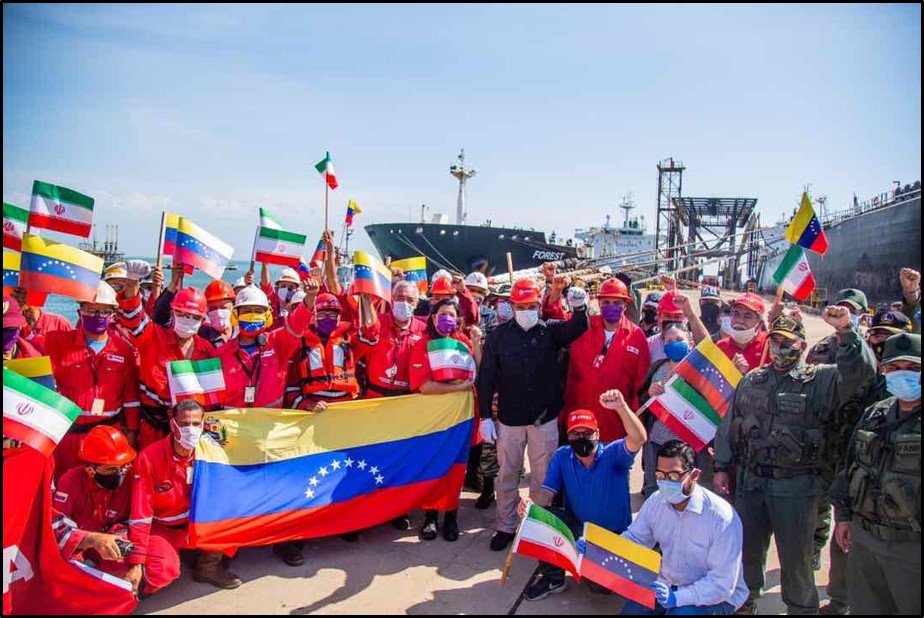
Venezuela has the largest oil reserves in the world, but its energy industry is so dilapidated from corruption, mismanagement and underinvestment that it cannot refine enough oil anymore to satisfy its domestic needs for gasoline. This has caused real political problems. There are long lines for gasoline throughout Venezuela. It’s caused a massive increase in protests in the interior of Venezuela and even signs of disgust at the government in Caracas, the capital, which normally gets its basic needs, such as water or electricity and gasoline, taken care of better by the government.
Iran’s refining capabilities and its ability to meet the basic gasoline needs of Venezuela have become really critical, which again seems odd because the origin of this relationship is that these are two powerhouse oil exporters and real players in the global energy sector.
What does Venezuela do with the oil that Iran provides?
Venezuela largely needs this gasoline – refined oil and other refined oil products – for its transportation sector or consumer uses. It had previously relied on refineries operated by Citgo on the U.S. Gulf Coast and other refiners who could handle the heavy crude from Venezuela. Sanctions by the Trump administration have stopped the import of Venezuelan oil to the United States and made it very difficult for Venezuela to find partners willing to run afoul of secondary U.S. sanctions.
Iran had both the capability and the willingness to help Venezuela meet its gasoline needs and evade U.S. sanctions, while also trying to support the maintenance and rebuilding of these dilapidated refineries in Venezuela. These refineries were closed at different times for emergency maintenance, and the parts have been looted by workers desperate for assets as they face scarcities of food and medicine. The service being provided by Iran is now really critical for Venezuela and is no longer just a symbolic thumb in the eye of the United States, as it was in earlier phases of this relationship.
Why did Caracas not turn to Russia, which had a relationship with Venezuela and also produces oil?
The Russians are huge players in the Venezuelan oil sector. They’ve been buying up assets at fire sale prices. Rosneft, now operating under a different name, has become a real significant investor. As much as 80 percent of Venezuelan oil exports is estimated to have been transported by Rosneft over the past three years.
The Russians were lending billions to Venezuela in return for oil. It’s the same kind of Chinese-style oil-for-loans program that Venezuela has used through the years. However, Venezuela has recently largely repaid Russia most of what it borrowed. Rosneft has become a little bit shy about running afoul of U.S. sanctions, something that doesn’t bother the regime in Iran. The Venezuelans have turned to Iran to find a new partner with no qualms about violating U.S. sanctions and no qualms about facing the potential interdiction of supplies, which has occurred as it has tried to ship – mostly successfully – tankers full of refined oil products to Venezuela.
What has the United States done about running oil shipments to Venezuela?
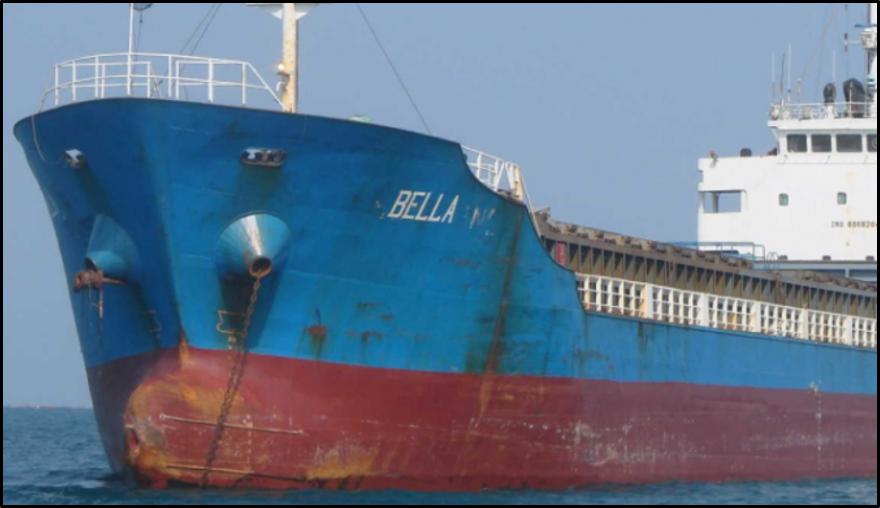
There’s no official U.S. embargo on Venezuela. It’s something that the Trump administration has contemplated at times and was dissuaded from pursuing by the Pentagon, which recognizes that it would be considered an act of war – and not logistically easy either. The U.S. has managed to interdict some of these oil shipments, but not most of them. In May 2020, five tankers from Iran delivered gas to Venezuela without much interference. In August, the U.S. did successfully seize four tankers flying under the Liberian flag that were carrying gasoline from Iran to Venezuela.
There have also been efforts to squeeze middlemen. The Colombian businessman Alex Saab, who is considered one of the key intermediaries between Venezuela and Iran, was arrested while transiting Cape Verde on his way to Iran from Venezuela. The U.S. sought his extradition, a sign that the U.S. was trying to crack down not only on Iranian gas to Venezuela, but also on Venezuela’s ability to take its mostly illicitly-mined gold and find a market for it. In this case, the market is in Iran and it’s used in exchange for these refined oil products.
Have U.S. actions deterred Iran from shipping oil to Venezuela?
No. The U.S. has no leverage when it comes to Iran. Other countries might be concerned about secondary sanctions imposed by the United States. But Iran already faces such heavy sanctions and a lack of access to the U.S. financial system that there’s very little that the U.S. could do to dissuade Iran from doing business with Venezuela.
There are very few hard assets left in Venezuela’s Central Bank. Oil prices have lowered since 2014, and during the pandemic. They have lowered even more so because of the discounts that Venezuela has to provide because customers are taking a real regulatory risk. For all these reasons, Venezuela really lacks hard currency, and its economy is collapsed.
It can’t generate the dollars it used to from oil, and it no longer produces virtually anything else, including food. As a result, this is a country that had over $40 billion in reserves as recently as 12 years ago. It’s down to about $6 billion. It used to generate $90 billion from its oil exports. Now it’s generating three or four billion. All that leads to having almost no hard currency.
What kind of lessons has Iran learned about sanctions evasion that would be useful for Venezuela?
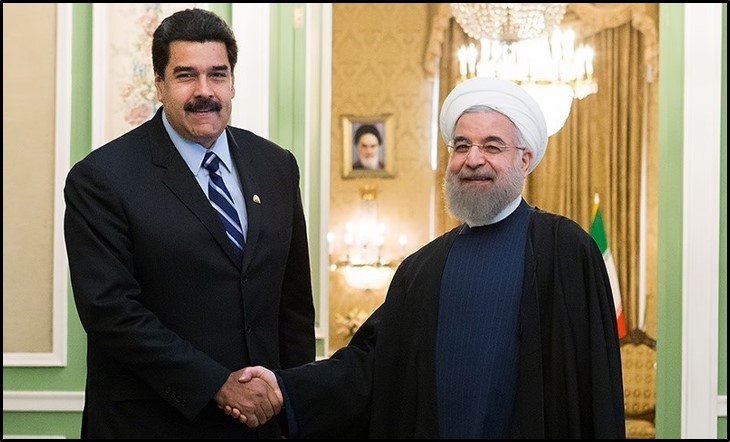
Some of it is where you bank when traditional central banks and respectable financial institutions will no longer do business with you. The sanctions imposed by the United States have meant that Venezuela can’t refinance any of its debt. Venezuela has had to learn how to move money illicitly, and how to find financial sector actors willing to risk running afoul of U.S. sanctions. Caracas has had to learn how to discount its exports so that they are more appealing to countries that might otherwise be discouraged by U.S. policy.
Venezuela has shown itself much more creative than the U.S. anticipated. Venezuela is generating significant resources from the sale of narcotics, from the sale of gold, which it has to launder through the Caribbean and then find buyers in Turkey and Iran. The U.S. has been surprised and disappointed with the ability of the Venezuelan regime to evade sanctions; some of that expertise has reportedly been offered by Iran.
Why do the Iranians want gold? And what role does gold play in sanctions evasion?
It’s an attractive means of exchange because it’s hard to trace. There’s no equivalent to systems that trace diamonds. The gold can be smuggled. Relatively small quantities can be taken to the Caribbean in a suitcase or in a ship and then unloaded. If it is laundered and enters into the gold trading system, it’s quite opaque. It’s a very convenient way for a country that has partners who don’t want to advertise their commercial relationships with Venezuela to still transact with the regime in Caracas. Gold’s lack of traceability, its abundance in Venezuela – not only in the Central Bank, but also underground – has made it a really attractive currency for Venezuela. During global economic dramas, the value of gold tends to increase as a more secure means to save.
What is the nature of security cooperation between Iran and Venezuela – and why do they cooperate?
South America fundamentally is a peaceful place. Venezuela may occasionally threaten to invade Colombia, and it threatened to invade Guyana next door in a dispute over maritime boundaries and off-shore energy resources. In reality, there are no security threats to Venezuela, unless you count President Trump’s warning that “all options are on the table” to deploy against the Maduro regime.
In more flush times, Venezuela bought Iranian military equipment, such as drones. This was truer with its relationship with Russia; Venezuela truly became one of the big buyers of Russian materiel before 2014, when oil prices were high. There were unconfirmed reports that the Qods Force, the elite wing of Iran’s Revolutionary Guards, had a presence in Venezuela.
Hezbollah had an interest in operating much further south in South America and in the tri-border area between Argentina, Paraguay and Brazil, a major hub for illicit activity. Hezbollah uses Venezuela to get into Latin America undetected and without having to worry about what passports and what diplomatic cover senior Hezbollah officials were using to travel.
Fundamentally, neither has a lot to offer. But the United States certainly has been concerned that Iran has an area where it could operate free of scrutiny so close to the U.S. southern border.
What kinds of drones Venezuela are interested in? Why do they want Iranian drones?
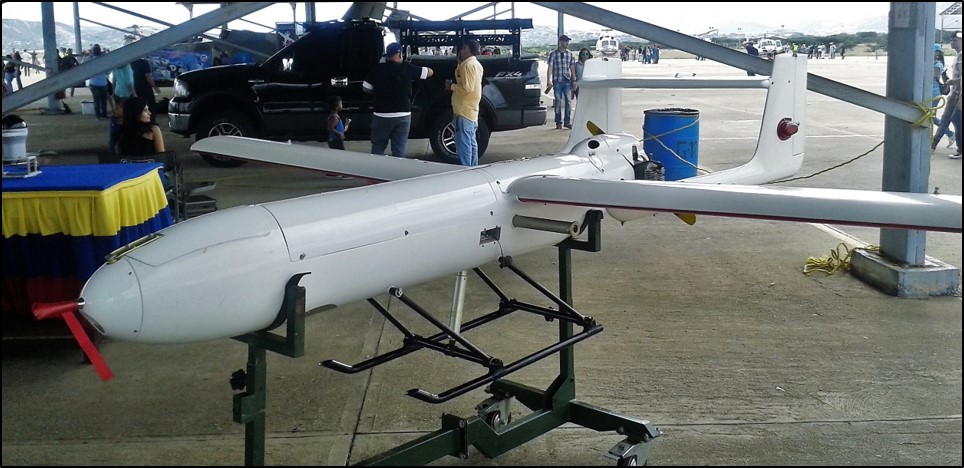
Chávez’s decision was driven by politics. It’s not as if he looked at options from U.S. and European manufacturers and decided Iran’s were preferable in terms of quality. His decision was likely motivated by a desire to forge a closer political relationship with Tehran by jointly producing surveillance drones, which also explains why Venezuela sought military equipment from Russia over the past two decades. The United States has prohibited arms sales to Venezuela since 2006.
Does Venezuela purchase any other military equipment from Iran?
There was a time, particularly under Chávez when oil prices were high, that Venezuela spent quite a bit on its military, supposedly with an eye toward neighboring Colombia, which is armed and trained by the United States, and to prepare for a potential U.S. intervention. Russia was Venezuela’s top supplier in this era. Maduro has provocatively expressed interest in purchasing missiles from Iran, but the regime is short on cash and can barely afford food and medicine imports. Earlier this month, the Iranian foreign minister met Maduro in Caracas. In an interview, he spoke about the importance of bilateral defense cooperation in the face of U.S. aggression, but he did not say Iran intended to ship missiles to Venezuela.
How credible are reports that Iran’s Qods Force is in Venezuela? What are they doing or what are they being accused of doing in Venezuela?
It’s unclear why the Qods Force would be operating in Venezuela in any meaningful numbers. I can’t say so definitively, but given the level of scrutiny in the United States of Iran’s presence in the Andes, including in Congress, any evidence of significant Qods Force activity would likely have come to light.
What role do Iran’s proxies, such as Hezbollah, play in Venezuela? What is the narcotics link?
There’s always a risk when a terrorist organization like Hezbollah is operating anywhere, and Hezbollah does have an appalling record of carrying out terrorist attacks in Latin America. Most experts on Hezbollah in Latin America have concluded that it is primarily raising money, particularly in the tri-border area, through all sorts of illicit commercial activities – money that’s increasingly needed as Iran, as a result of sanctions and low oil prices, has less money available to subsidize its proxies worldwide.
Most of that illicit activity is thought to take place much further south of Venezuela in the area near Paraguay, Brazil and Argentina. But the fact that Hezbollah has free rein to operate in Venezuela makes it presumably easier for its operatives to travel around Latin America. This has been an issue because Interpol is meant to hold Iran’s feet to the fire until it coughs up the suspects in the AMIA bombing. When individuals who are subject to these Red Notices for the Hezbollah-linked bombings in Argentina show up – for example, in Bolivia – the Argentines create a stir. But by and large, Iranian friendships in Latin America, in particular in Caracas, have facilitated Hezbollah’s presence in the Western Hemisphere, as well as for Iranian officials who coordinate Hezbollah operations.
The Venezuelan regime is also a drug-trafficking organization. It not only harbors Colombian guerillas, but it meaningfully benefits from its role in the shipment of cocaine from South America abroad, including to the United States and Europe. In March 2020, the Justice Department indicted the president of Venezuela, Nicolás Maduro, and other top-ranking officials, for coordinating the transport of cocaine with Columbia’s FARC guerrillas. Two nephews of Maduro are in prison in the United States for their role in the export of cocaine. The Treasury Department has repeatedly designated senior officials, including Tarek El Aissami, the former vice president of Venezuela, as major drug kingpins.
Hezbollah engages in illicit fundraising activities and it is close with Venezuela, so it is probably not a stretch to think that it may benefit as well from the very lucrative drug trade – taking advantage of the fact that the United States remains a huge market for illegal narcotics and that the Venezuelan government is desperate for any sources of hard currency.
Related Material:
- Iran, Venezuela Increase Ties Amid U.S. Sanctions
- Timeline: Iranian Fuel Shipments to Venezuela
- Zarif visits Latin America
